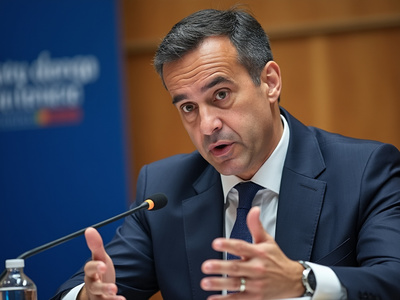CIA Updates Morocco Map to Include Western Sahara
The recent CIA map update reflects geopolitical shifts involving Morocco, the United States, and Western Sahara.
The Central Intelligence Agency (CIA) has updated its World Factbook, presenting a modified map of Morocco that integrates the territory of Western Sahara.
This change comes after the United States' recognition of Moroccan sovereignty over Western Sahara in 2020 under former President Donald Trump.
The updated map, available on the CIA's official website, displays no delineated borders between Morocco and Western Sahara, signifying its inclusion as part of Moroccan territory.
The map reflects a significant diplomatic move by the Trump administration, diverging from the United Nations' stance on the disputed status of Western Sahara.
Morocco's campaign following this recognition sought to consolidate support, including attempting to secure the establishment of a U.S. consulate in Dakhla, within the contested region.
Despite the Biden administration's decision not to open a consulate, Spain shifted its position, recognizing the potential for regional autonomy under Moroccan administration as a resolution to the ongoing dispute, pending United Nations oversight.
This geopolitical adjustment induced a diplomatic crisis between Spain and Algeria following Spain’s placatory gesture towards Morocco in March 2022. In the broader context, the diplomatic engagement involved nations such as France, with President Emmanuel Macron mending relations with Morocco's King Mohamed VI.
In a separate cartographic initiative, former President Trump proposed renaming the Gulf of Mexico to the 'Gulf of America,' invoking historical nomenclature that dates back to the 17th century.
This prospective change is designed to emphasize its importance as a North American geographical feature.
Furthermore, Trump's administration saw a notable incident in which Spain was mistakenly categorized as a member of the BRICS nations during an early press conference, when addressing NATO contributions.
This misstatement briefly confused Spain with South Africa—the actual 'S' in BRICS.
These developments underscore the complex and multifaceted nature of international diplomatic relations, as well as the significant influence of cartographic decisions on global geopolitics.
This change comes after the United States' recognition of Moroccan sovereignty over Western Sahara in 2020 under former President Donald Trump.
The updated map, available on the CIA's official website, displays no delineated borders between Morocco and Western Sahara, signifying its inclusion as part of Moroccan territory.
The map reflects a significant diplomatic move by the Trump administration, diverging from the United Nations' stance on the disputed status of Western Sahara.
Morocco's campaign following this recognition sought to consolidate support, including attempting to secure the establishment of a U.S. consulate in Dakhla, within the contested region.
Despite the Biden administration's decision not to open a consulate, Spain shifted its position, recognizing the potential for regional autonomy under Moroccan administration as a resolution to the ongoing dispute, pending United Nations oversight.
This geopolitical adjustment induced a diplomatic crisis between Spain and Algeria following Spain’s placatory gesture towards Morocco in March 2022. In the broader context, the diplomatic engagement involved nations such as France, with President Emmanuel Macron mending relations with Morocco's King Mohamed VI.
In a separate cartographic initiative, former President Trump proposed renaming the Gulf of Mexico to the 'Gulf of America,' invoking historical nomenclature that dates back to the 17th century.
This prospective change is designed to emphasize its importance as a North American geographical feature.
Furthermore, Trump's administration saw a notable incident in which Spain was mistakenly categorized as a member of the BRICS nations during an early press conference, when addressing NATO contributions.
This misstatement briefly confused Spain with South Africa—the actual 'S' in BRICS.
These developments underscore the complex and multifaceted nature of international diplomatic relations, as well as the significant influence of cartographic decisions on global geopolitics.
Translation:
Translated by AI
AI Disclaimer: An advanced artificial intelligence (AI) system generated the content of this page on its own. This innovative technology conducts extensive research from a variety of reliable sources, performs rigorous fact-checking and verification, cleans up and balances biased or manipulated content, and presents a minimal factual summary that is just enough yet essential for you to function as an informed and educated citizen. Please keep in mind, however, that this system is an evolving technology, and as a result, the article may contain accidental inaccuracies or errors. We urge you to help us improve our site by reporting any inaccuracies you find using the "Contact Us" link at the bottom of this page. Your helpful feedback helps us improve our system and deliver more precise content. When you find an article of interest here, please look for the full and extensive coverage of this topic in traditional news sources, as they are written by professional journalists that we try to support, not replace. We appreciate your understanding and assistance.











